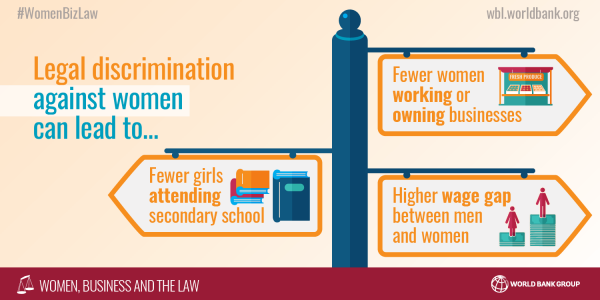The patriarchal nature of the country coupled with legislation, which hinders gender equality, are partly to blame for the country’s failure to fully utilise the contribution of the female gender to the growth and development of the country. Women are viewed as the ‘weaker sex’ – a ‘view’ or ‘idea’ that is flawed in its entirety. This is particularly evidenced by the various feats and seminal contributions made by women in their respective fields. Also, women constitute half of the world’s working-age population with the potential to contribute an additional US$12 Trillion to the global annual GDP by the year 2025[1].
The Flavour of the 1999 Constitution
One of the major concerns of pro-gender equality activists in Nigeria is the flavour of the 1999 Constitution of the Federal Republic of Nigeria as it relates to the female person. It has been argued that the constitution, which is the ‘grundnorm’ upon which all other legislations in Nigeria get their validity, has a non-gender neutral language, perhaps because it was written by men. For example, the pronoun “He” appears in the 1999 constitution about 235 times. Some advocates have recommended the replacing “he” with “a person” to make the language more female gender-friendly. Also, spousal rape is a concept which is yet to be taken into account by Nigerian legislation. It is important to note that a key ingredient in rape is the lack of consent. Whether or not marriage is an exception to the requirement of consent is an issue. We have to look to the law for guidance. In the English case of James v R[2], the court held per Viscount Dilhorne inter alia, that “in any of offence of rape like in the instant case, a corroborative evidence, must confirm in some material particulars that the sexual intercourse took place without the consent of the girl or woman” Also, in Iko v The State[3], the court held that “Rape in legal parlance, means a forcible sexual intercourse with a girl or a woman without her giving consent to it”. It is important to note that nowhere in these decisions did the court state marriage as a basis of rape.
Non-Recognition of Marital Rape
Hence, based on these decisions, it can be validly argued that rape can occur even within the marriage milieu as was held in the English law case of R v R.[4] However, marital rape is not recognised under Nigerian laws. Section 182 of the Penal Code provides that “sexual intercourse by a man with his wife is not rape if she has attained puberty.” Although many have argued that rape does not fall within the purview of marriage because one of the essences of marriage is procreation and as such, sex cannot be criminalized as between husband and wife even as it is a conjugal right and obligation. However, this does not negate the fact that lack of consent is a vital ingredient in proving the offence of rape.
No Clear Expression of Discrimination Based on Sex or Gender
Section 17 (3)(a) of the 1999 Constitution of the Federal Republic of Nigeria (as amended) provides that “The State shall direct its policy towards ensuring that all citizens, without discrimination on any group whatsoever, have the opportunity for securing adequate means of livelihood as well as adequate opportunity to secure suitable employment.” This section of the law does not expressly refer to discrimination on the basis of sex. However, it makes mention of discrimination of “any group whatsoever”. Hence it can be argued that “gender” falls within this group.
In the light of all these, would reviewing Nigerian laws, help the cause of the Nigerian woman?
[1] McKinsey Global Institute (MGI) report, 2015 https://www.mckinsey.com/featured-insights/employment-and-growth/how-advancing-womens-equality-can-add-12-trillion-to-global-growth
[2] (1971) 55 C.A.R. 299 @ 302 (P.C.)
[3] (2001) 14 NWLR (Pt.732) 195
[4] 1 AC 599


